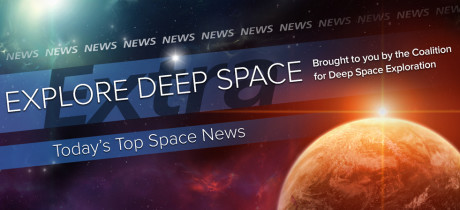In Today’s Deep Space Extra… NASA’s commercial crew test launches slip into 2019. U.S. and Russian astronauts return to Earth after a 197 tour of duty aboard the International Space Station (ISS). The Europe Space Agency (ESA) enters the search for extra solar habitable planets.
Human Space Exploration
NASA concedes no commercial crew flight tests this year
Coalition Member in the News – Boeing
Spacepolicyonline.com (10/4): Neither of NASA’s two commercial crew program partners, Boeing and SpaceX, will be cleared by the agency to launch the uncrewed or crewed test flights required to certify the CST-100 Starliner or Crewed Dragon to begin transporting astronauts to and from the International Space Station (ISS) in 2018. A planning date for an uncrewed SpaceX Dragon launch moves from this November to January 2019. Boeing’s uncrewed launch of the Starliner moves from late 2018/early 2019 to March 2019. The test launches without astronauts are to set the stage for test launches with astronauts. More changes are possible as the latest planning dates approach, NASA cautioned on Thursday.
Soyuz MS-08 crew completes 197-day Space Station mission
Spaceflightinsider.com (10/4): Early Thursday, Russia’s Soyuz MS-08 departed the International Space Station (ISS) and descended to Earth ending a 197 day mission for NASA astronauts Drew Feustel and Ricky Arnold and cosmonaut Oleg Artemyev. They were greeted by Russian led recovery forces as they touched down in remote Kazakhstan at 7:44 a.m., EDT. Before their undocking from the Space Station, Feustel transitioned command of the six person orbiting science lab over to European Space Agency (ESA) astronaut Alexander Gerst, of Germany. Replacements are to launch early October 11 on the Soyuz MS-10 from the Baikonur Cosmodrome in Kazakhstan. Those aboard will be NASA’s Nick Hague and Russia’s Aleksey Ovchinin.
Review: ‘Above and Beyond,’ a heartening salute to NASA
New York Times (10/4): “Above and Beyond: NASA’s Journey to Tomorrow,” is a new documentary that pays tribute to the nation’s space agency, as it marks its 60th anniversary and the 50th anniversary of the Apollo 11 Moon landing approaches. Director Rory Kennedy, also the film’s narrator, is the niece of the late president John F. Kennedy, who instructed NASA to reach for the Moon with human explorers.
Space Science
Construction of Europe’s exoplanet hunter Plato begins
European Space Agency (10/4): Germany’s OHB System AG will lead Europe’s’ effort to enter the search for extra solar Earth-like planets. The Plato mission is to be launched in 2026. The spacecraft will be built and assembled by OHB together with Thales Alenia Space (France and the U.K.) and RUAG Space Switzerland. Many European Space Agency (ESA) member states will also be involved in the construction of this European planet hunter, according to an announcement Thursday from the International Astronautical Conference in Bremen, Germany.
RIP, MASCOT: Hopping lander meets its end on asteroid Ryugu
Space.com (10/4): As planned, explorations on the surface of the asteroid Ryugu by the hopper/rover MASCOT came to an end on Thursday. The battery powered rover, developed by a German/French collaboration for flight aboard Japan’s Hayabusa 2 asteroid sample return mission, was deployed to the asteroid’s surface earlier this week with a 16 hour battery charge. MASCOT managed to stretch operations an extra hour. Hayabusa 2, launched in late 2014, reached Ryugu in late June and deployed two small Japanese hopper/rovers to the asteroid’s surface on September 21. Late this month, Hayabusa 2 is to descend to the surface of the asteroid for the first of three sample collecting sessions. The samples are to be delivered back to Earth in December 2020.
Universe Today (10/3): Call it 2015 TG-387, or the Goblin, either way some think this distant Kuiper Belt Object’s journey around the sun is gravitationally influenced by a mysterious and yet to be confirmed Planet 9.
Other News
The Orion spacecraft may carry more than NASA missions to the Moon
Coalition Members in the News – Lockheed Martin, NanoRacks
Ars Technica (10/4): Lockheed Martin, NASA’s prime contractor for the Orion crew capsule, has partnered with NanoRacks to assess possible commercial markets for small payloads that could ride along on missions to the lunar environs. They could be internal experiments or technical demonstrations, or payloads that could be dropped off in geostationary transfer orbit or maybe even delivered to lunar orbit.
Genius companies 2018: 50 businesses inventing the future
Coalition Member in the News – Lockheed Martin
Time (10/4): Who is best on the Earth at creatively solving big problems? Time offers 50 candidates along with explanations for how they are succeeding at confronting big challenges.
Do smallsats even need insurance?
SpaceNews.com (10/4): Enthusiasm for small low orbit satellites is rising at the same time many operators of traditional geostationary satellites are not replacing their spacecraft, or insuring them. But that may be changing as operators of small sats begin to take on more revenue generating services, offering money streams that may warrant protection.

